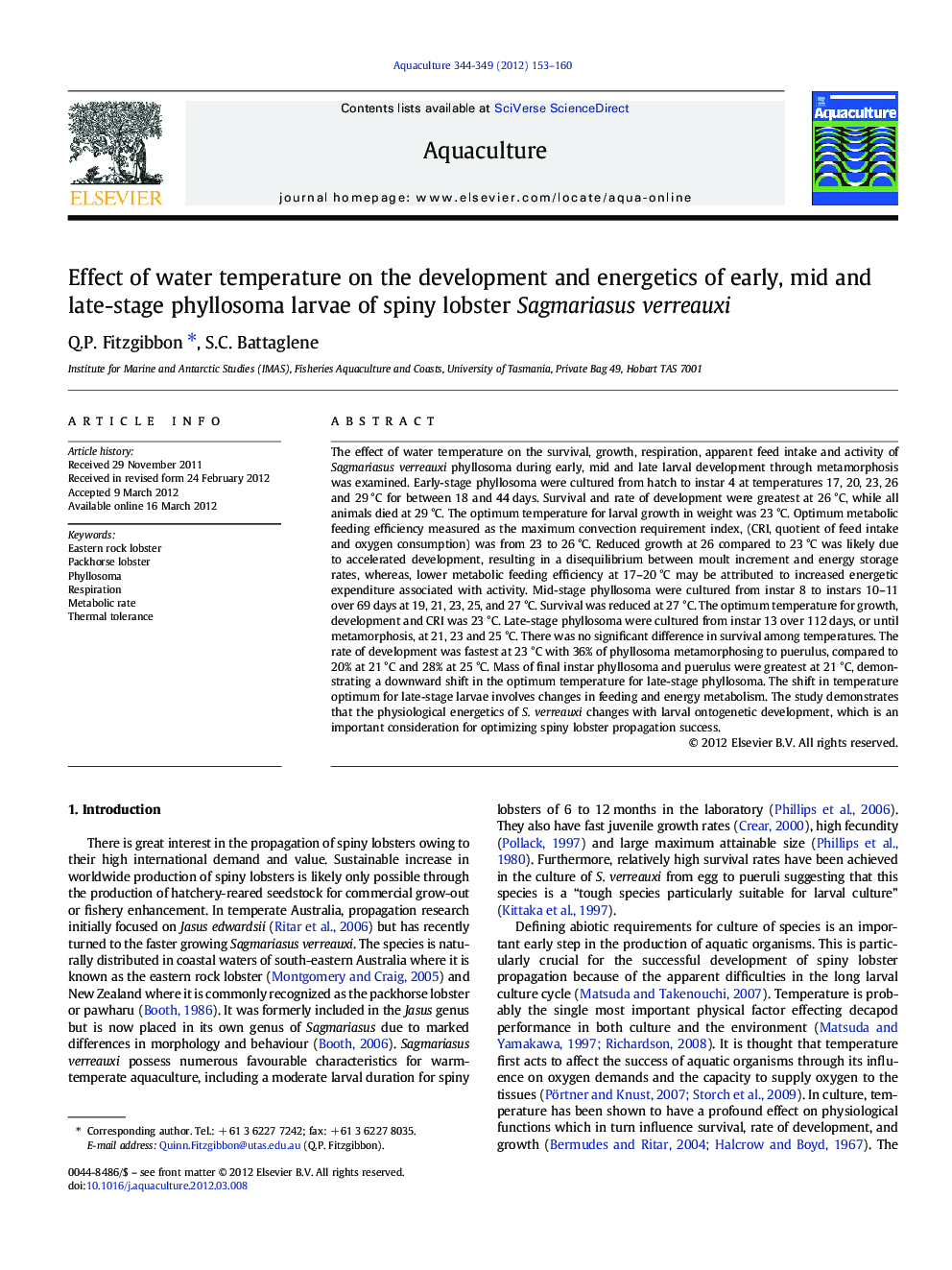| کد مقاله | کد نشریه | سال انتشار | مقاله انگلیسی | نسخه تمام متن |
|---|---|---|---|---|
| 2422641 | 1552891 | 2012 | 8 صفحه PDF | دانلود رایگان |

The effect of water temperature on the survival, growth, respiration, apparent feed intake and activity of Sagmariasus verreauxi phyllosoma during early, mid and late larval development through metamorphosis was examined. Early-stage phyllosoma were cultured from hatch to instar 4 at temperatures 17, 20, 23, 26 and 29 °C for between 18 and 44 days. Survival and rate of development were greatest at 26 °C, while all animals died at 29 °C. The optimum temperature for larval growth in weight was 23 °C. Optimum metabolic feeding efficiency measured as the maximum convection requirement index, (CRI, quotient of feed intake and oxygen consumption) was from 23 to 26 °C. Reduced growth at 26 compared to 23 °C was likely due to accelerated development, resulting in a disequilibrium between moult increment and energy storage rates, whereas, lower metabolic feeding efficiency at 17–20 °C may be attributed to increased energetic expenditure associated with activity. Mid-stage phyllosoma were cultured from instar 8 to instars 10–11 over 69 days at 19, 21, 23, 25, and 27 °C. Survival was reduced at 27 °C. The optimum temperature for growth, development and CRI was 23 °C. Late-stage phyllosoma were cultured from instar 13 over 112 days, or until metamorphosis, at 21, 23 and 25 °C. There was no significant difference in survival among temperatures. The rate of development was fastest at 23 °C with 36% of phyllosoma metamorphosing to puerulus, compared to 20% at 21 °C and 28% at 25 °C. Mass of final instar phyllosoma and puerulus were greatest at 21 °C, demonstrating a downward shift in the optimum temperature for late-stage phyllosoma. The shift in temperature optimum for late-stage larvae involves changes in feeding and energy metabolism. The study demonstrates that the physiological energetics of S. verreauxi changes with larval ontogenetic development, which is an important consideration for optimizing spiny lobster propagation success.
► The optimum temperature for early and mid stage phyllosoma growth and convection requirement index was 23 °C.
► Reduced growth at higher temperatures was likely due to a disequilibrium between larval development and growth rate.
► Low temperatures result in lower metabolic feeding efficiency due to increased energetic expenditure associated with activity.
► There is a downward shift in the optimum temperature for late stage phyllosoma.
► S. verreauxi phyllosoma can be cultured through metamorphosis with high survival.
Journal: Aquaculture - Volumes 344–349, 21 May 2012, Pages 153–160